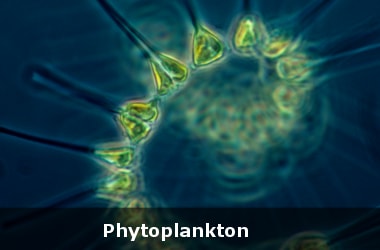
NASA space-based sensor that can 'see' through fog, clouds and darkness has given scientists the first continuous look at the boom-bust cycles of polar phytoplanktons, microscopic marine plants
Phytoplanktons are the foundation of the ocean's food web.
The decade-long set of images shows that phytoplankton cycles are more tied to the push-pull relationship between them and their predators than was initially thought.
Commercial fisheries, marine mammals and birds all depend on the phytoplankton.
Phytoplankton also influences Earth's carbon cycle. Through photosynthesis, they absorb a great deal of the carbon dioxide near the ocean's surface. That, in turn, allows CO2 from the atmosphere to go into the ocean.
Satellite-mounted LIDAR instrument, dubbed Cloud-Aerosol Lidar with Orthogonal Polarisation (CALIOP), uses a laser beam to map the ocean's surface and immediate subsurface.
CALIOP monitored plankton in the Arctic and Antarctic ocean waters from 2006-2015
Its measurements show that, as the phytoplankton growth accelerates, the blooms are able to outpace the organisms that prey on them.
Once that acceleration stops, however, the predatory organisms catch up and the bloom ends.
The finding goes against the commonly held belief that blooms begin when phytoplankton growth rates reach a threshold rate and then stop when growth rates crash.
Instead, blooms start when growth rates are extremely slow, and then stop when phytoplankton growth is at its maximum but the acceleration of the bloom has hit its peak.
It is only at this point that the predatory organisms catch up and the bloom terminates.
Study showed in Arctic waters the year-to-year changes in this constant push and pull between predator and prey has been the primary driver of change over the past decade.
It is different in the southern ocean around Antarctica, where changes in the ice cover held more sway.